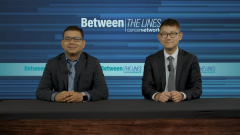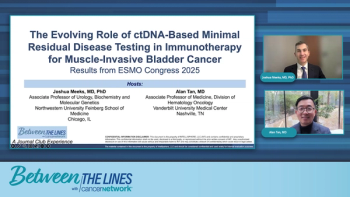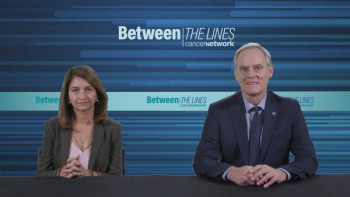
Real-World Data From IMS: Promising Results in Relapsed/Refractory Multiple Myeloma
Experts discuss real-world data showing that teclistamab delivers efficacy and safety outcomes comparable to findings from clinical trials in patients with relapsed/refractory multiple myeloma—including older individuals at high risk—while highlighting the emerging role of shared care models to manage step-up dosing and expand access across community oncology settings.
A recent real-world study evaluated outcomes in patients with relapsed/refractory multiple myeloma treated with teclistamab in a large US community oncology network. The goal was to assess step-up dosing patterns, efficacy, and safety following the drug’s approval. The analysis included 50 patients with a median age of 73 years and a median of 4 prior lines of therapy, consistent with typical clinical practice. Notably, 74% met the eligibility criteria from the MajesTEC-1 trial, though real-world patients tended to be sicker, with higher rates of International Staging System stage III disease and high-risk cytogenetics.
Efficacy outcomes were encouraging. The overall response rate was 74% in the entire cohort and 73% in the teclistamab-eligible subgroup, closely mirroring MajesTEC-1 trial results. At 12 months, progression-free survival was 65% overall and 76% in eligible patients, with overall survival at approximately 75% to 78%. These findings suggest that teclistamab can deliver similar outcomes in real-world settings, even among older, more heavily pretreated patients at higher risk compared with clinical trial populations.
Safety data were also consistent with clinical trial experience. Cytokine release syndrome occurred in 38% to 46% of patients, but most cases were low-grade and resolved. Infections were more frequent, with 68% to 73% of patients affected, though only a small fraction required hospitalization. Nearly half received intravenous immunoglobulin prophylaxis, which is becoming more common to mitigate infection risk. Step-up dosing was largely handled through referrals to inpatient centers, but patients typically returned to the community setting within 15 days for ongoing therapy, highlighting a growing model of shared care between academic and community practices.
Newsletter
Stay up to date on recent advances in the multidisciplinary approach to cancer.
















































































